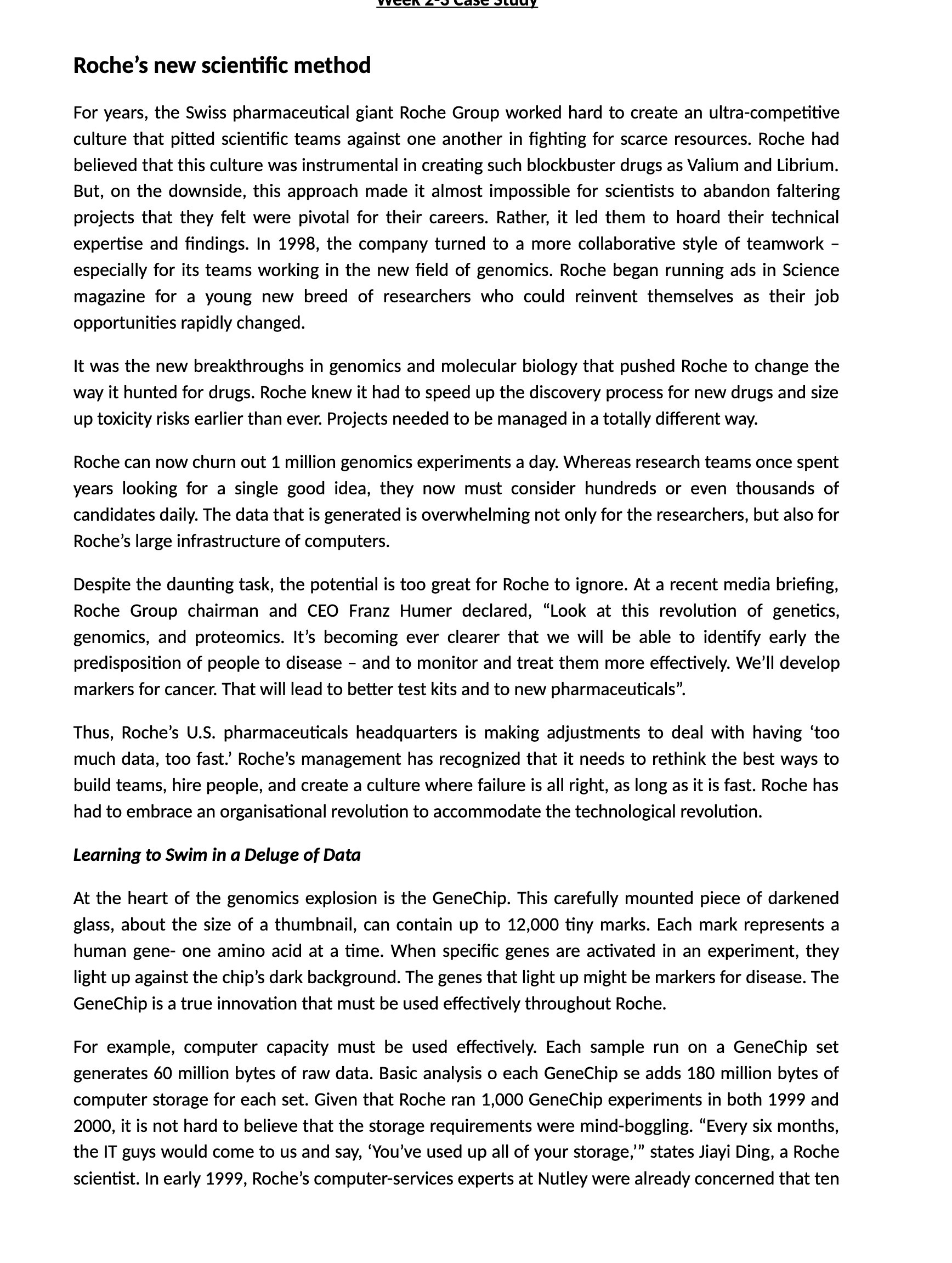'VCCI' L_IJ La): aLuu! Roche's new scientic method For years, the Swiss pharmaceutical giant Roche Group worked hard to create an ultra-competitive culture that pitted scientic teams against one another in ghting for scarce resources. Roche had believed that this culture was instrumental in creating such blockbuster drugs as Valium and Librium. But, on the downside, this approach made it almost impossible for scientists to abandon faltering projects that they felt were pivotal for their careers. Rather, it led them to hoard their technical expertise and ndings. in 1998, the company turned to a more collaborative style of teamwork especially for its teams working in the new eld of genomics. Roche began running ads in Science magazine for a young new breed of researchers who could reinvent themselves as their job opportunities rapidly changed. It was the new breakthroughs in genomics and molecular biology that pushed Roche to change the way it hunted for drugs. Roche knew it had to speed up the discovery process for new drugs and size up toxicity risks earlier than ever. Projects needed to be managed in a totally different way. Roche can now churn out 1 million genomics experiments a clay. Whereas research teams once spent years looking for a single good idea, they now must consider hundreds or even thousands of candidates daily. The data that is generated is overwhelming not only for the researchers, but also for Roche's large infrastructure of computers. Despite the daunng task, the potential is too great for Roche to ignore. At a recent media brieng, Roche Group chairman and CEO Franz Humer declared, \"Look at this revolution of genetics, genomics, and proteomics. It's becoming ever clearer that we will be able to identify early the predisposition of people to disease and to monitor and treat them more effectively. We'll develop markers for cancer. That will lead to better test kits and to new pharmaceuticals". Thus, Roche's U.S. pharmaceuticals headquarters is making adjustments to deal with having 'too much data, too fast.' Roche's management has recognized that it needs to rethink the best ways to build teams, hire people, and create a culture where failure is all right, as long as it is fast. Roche has had to embrace an organisational revolution to accommodate the technological revolution. Learning to Swim in a Deluge of Data At the heart of the genomics explosion is the GeneChip. This carefully mounted piece of darkened glass, about the size of a thumbnail, can contain up to 12,000 tiny marks. Each mark represents a human gene- one amino acid at a time. When specic genes are activated in an experiment, they light up against the chip's dark background. The genes that light up might be markers for disease. The GeneChip is a true innovation that must be used effectively throughout Roche. For example, computer capacity must be used effectively. Each sample run on a GeneChip set generates 60 million bytes of raw data. Basic analysis 0 each GeneChip se adds 180 million bytes of computer storage for each set. Given that Roche ran 1,000 GeneChip experiments in both 1999 and 2000, it is not hard to believe that the storage requirements were mind-boggling. \"Every six months, the IT guys would come to us and say, 'You've used up all of your storage,' \" states Jiayi Ding, a Roche scientist. In early 1999, Roche's computer-services experts at Nutley were already concerned that ten







